This article was co-authored by Zora Degrandpre, ND. Dr. Zora Degrandpre is a Natural Health Doctor and Licensed Naturopathic Physician in Vancouver, Washington. She is a grant reviewer for the National Institutes of Health and the National Center for Complementary and Alternative Medicine. She received her ND from the National College of Natural Medicine in 2007.
There are 7 references cited in this article, which can be found at the bottom of the page.
wikiHow marks an article as reader-approved once it receives enough positive feedback. This article received 21 testimonials and 87% of readers who voted found it helpful, earning it our reader-approved status.
This article has been viewed 1,246,673 times.
Nail fungus refers to a fungal infection that starts underneath your toenails. It could cause discoloration, thickening, or crumbling on one or more of your nails. This is a frustrating problem, so you’ll naturally want to get rid of nail fungus as soon as possible. One remedy you may have heard of is soaking your foot in vinegar to clear the infection. Vinegar is acidic, so it will kill bacteria and fungus.[1] However, this remedy has very limited success because the vinegar can’t penetrate under the nail. You can try it if you want to, but visit a podiatrist for further treatment if you don’t see any results in 2 weeks.
Steps
Making a Vinegar Soak
If you want to try treating your nail fungus with vinegar, then the best thing to do is soak your foot in a vinegar-water mixture. Diluting the vinegar is important to prevent it from irritating your skin. Try a daily soak and see if it helps clear the infection. If not, then don't panic. You can still use more conventional treatments.
-
1Trim your nail back before soaking your foot. If your nail is covering the fungus, then topical treatments won’t work very well. Take a clipper and trim your nail back as far as you can. This helps the vinegar reach the fungus and kill it.
- Don’t try to cut your nail past where the white section ends. You could cut yourself.
- If you have trouble cutting your nail, try softening it with a urea cream first. This is a common cosmetic treatment for skin irritations, and is available at most pharmacies.
- Disinfect the clipper as soon as you’re finished so you don’t spread the infection. Soak it in isopropyl alcohol for 30 minutes to kill all the fungus.
-
2Mix 1 cup (240 ml) each of warm water and white vinegar into a bowl. Find a bowl or bucket that you can fit your foot into. Pour both vinegar and warm water in, then stir them together.
- You could also use apple cider vinegar instead of white vinegar. Both contain similar amounts of acetic acid.
Advertisement -
3Soak your foot for 10-20 minutes. Place your foot into the bowl and make sure the water covers your infected toe. Then keep it there for 10-20 minutes so the vinegar can soak into the fungus.
- If you have any cuts on your foot, the vinegar may sting a little. This isn’t dangerous.
-
4Dry your foot thoroughly when you’re done. Fungus grows in moist conditions, so always dry your foot off as soon as you soak it. Take a clean towel and pat your foot dry before putting your shoes and socks back on.
- Don’t use this towel again before washing it because it could spread the fungus.
-
5Repeat this soak twice a day until your symptoms disappear. Nail fungus is tough to get rid of, so it’ll take a while. Soak your foot with vinegar and water twice every day. If you see some improvement after a few weeks, then you can continue. If you don’t see any improvement, then see a podiatrist for further treatment.
- If your nail grows, trim it back again so the vinegar can reach the fungus.
- This could take several months to work. If you can't keep up with soaking your foot twice a day or the fungus doesn't seem to be getting better, then see a podiatrist instead.
Using Conventional Treatments
Unfortunately, home remedies like a vinegar soak don’t have a good record for treating nail fungus. This is frustrating, but there are professional options that have much more success. Topical creams may work, but oral medication is most effective for nail fungus. Visit a podiatrist for an exam and follow their instructions to get rid of your nail fungus once and for all.
-
1Apply an over-the-counter antifungal cream for an easy treatment. Specialized antifungal creams might work better than a vinegar soak. Try getting some from a local pharmacy and applying it exactly as directed. For many creams, you have to apply them every day for a few weeks at least. Follow the directions and see if this helps the infection clear up.[2]
- Approved antifungal creams include Amorolfine, Ciclopirox, Efinaconazole, and Tavaborole.
- Keep your nails short so the cream can reach the fungus.
- Creams usually don’t work as well for nail fungus because they can’t penetrate the nail. Don’t be surprised if you don’t see much improvement and have to see a foot doctor.[3]
-
2Take prescription oral medication from your podiatrist. Oral medication is usually the go-to treatment for nail fungus because it works internally. If your infection isn’t clearing up with home treatments, then make an appointment with a podiatrist. The doctor will probably examine your toenail, then prescribe a medication to fight the fungus. Take the medication as directed for 2-3 months to clear the infection entirely.[4]
- Some common antifungal medications include Lamisil and Sporanox.
- Don’t stop taking the medication early. If you stop before all the fungus is dead, the infection could come back.
- At the initial appointment, the podiatrist may also trim your nail a bit to remove some of the fungus. This can help, but probably won’t cure the infection entirely.[5]
- Antifungal medications can be powerful, so your doctor may want to test your blood periodically to make sure the levels in your system are correct. Too much could cause liver damage.[6]
-
3Try medicated nail polish to penetrate your nail. Your podiatrist may try this approach along with oral medications. A medicated nail polish, usually Penlac, can soak through your nail and treat the fungus. In most cases, you brush it onto your nail and leave it there for a week. After that, you wash it off with alcohol and apply a fresh layer. Continue this application process for as long as the podiatrist tells you to.[7]
- The application procedure might be different depending on what medication your podiatrist prescribes. Follow the instructions that they provide.
Medical Takeaways
- While vinegar is a common home remedy for fungal infections, it doesn’t have a lot of success against nail fungus. Since it can’t penetrate underneath the nail, it can't kill the fungus. You can try it if you want to, but you might not see great results. If the infection doesn’t show any improvement in a few weeks, then visit a podiatrist for a more conventional treatment. Even with creams and medications, it still might take a few months for the infection to clear completely, so use all these treatments exactly as the podiatrist tells you to for the best results.
Expert Q&A
Did you know you can get premium answers for this article?
Unlock premium answers by supporting wikiHow
-
QuestionI am allergic to powdered detergent. What can I use to wash my clothes?
 Zora Degrandpre, NDDr. Zora Degrandpre is a Natural Health Doctor and Licensed Naturopathic Physician in Vancouver, Washington. She is a grant reviewer for the National Institutes of Health and the National Center for Complementary and Alternative Medicine. She received her ND from the National College of Natural Medicine in 2007.
Zora Degrandpre, NDDr. Zora Degrandpre is a Natural Health Doctor and Licensed Naturopathic Physician in Vancouver, Washington. She is a grant reviewer for the National Institutes of Health and the National Center for Complementary and Alternative Medicine. She received her ND from the National College of Natural Medicine in 2007.
Natural Health Doctor
Warnings
References
- ↑ https://ift.onlinelibrary.wiley.com/doi/pdf/10.1111/1750-3841.12434
- ↑ https://www.aad.org/public/diseases/a-z/nail-fungus-treatment
- ↑ https://medlineplus.gov/ency/article/001330.htm
- ↑ https://www.mayoclinic.org/diseases-conditions/nail-fungus/diagnosis-treatment/drc-20353300
- ↑ https://www.aad.org/public/diseases/a-z/nail-fungus-treatment
- ↑ https://www.mayoclinic.org/diseases-conditions/nail-fungus/diagnosis-treatment/drc-20353300
- ↑ https://www.mayoclinic.org/diseases-conditions/nail-fungus/diagnosis-treatment/drc-20353300
- ↑ https://www.health.harvard.edu/blog/home-remedies-that-may-be-worth-a-try-2017032211444
- ↑ https://ada.com/conditions/onychomycosis-fungal-nail-infection/
About This Article
To cure toenail fungus with vinegar, first trim your toenails with nail clippers so the vinegar will be more effective. Once your toenails are trimmed, pour equal parts vinegar and hot water in a big bowl. Then, soak your feet in the bowl for 10-20 minutes to kill the fungus. After soaking, allow your feet to dry completely before putting on socks, since having wet feet will allow more fungus to grow. After 1-2 weeks, you should start to see some improvement. If your fungus doesn’t go away, make sure to see a doctor so they can prescribe a stronger treatment. To learn how to prevent nail fungus, read more from our Medical co-author.
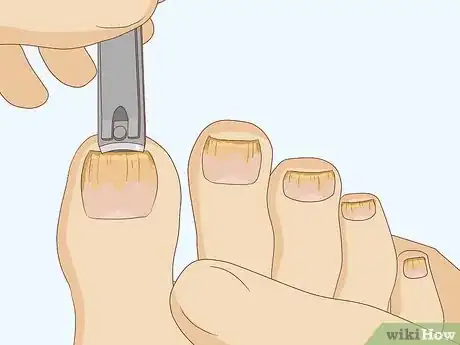

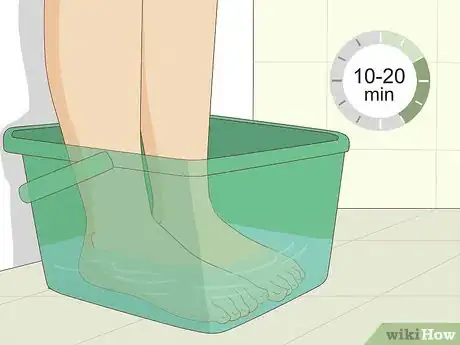
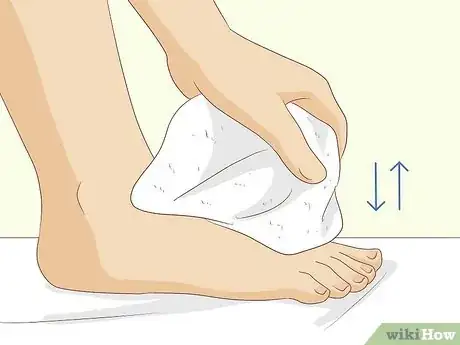
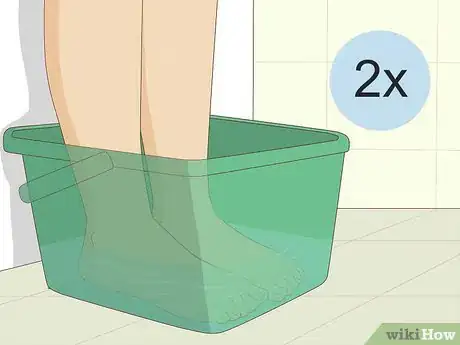
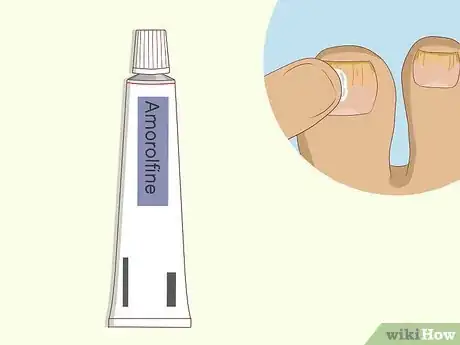
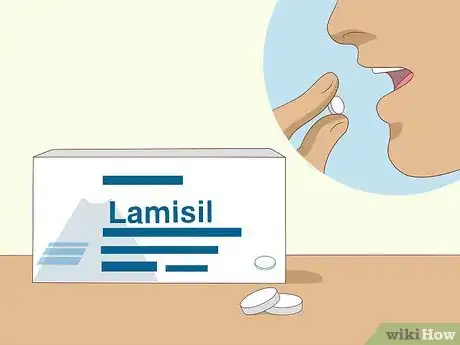
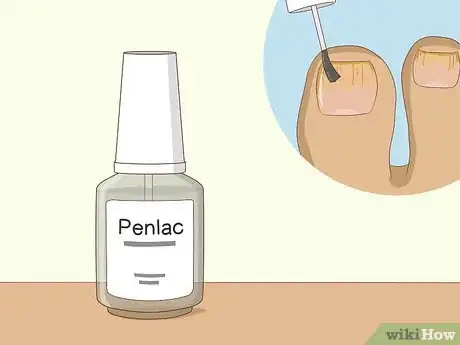
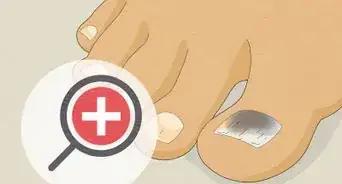
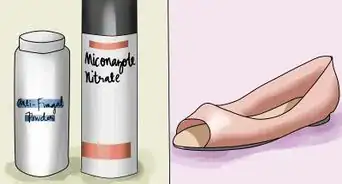

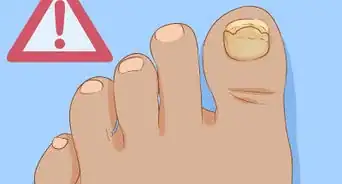
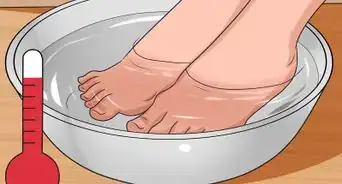
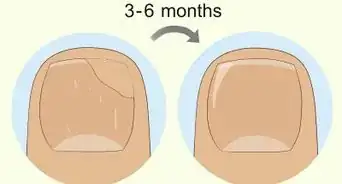

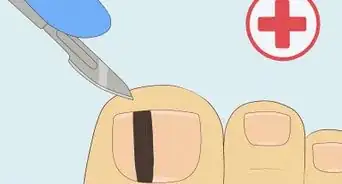
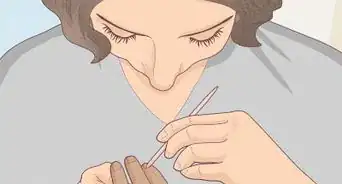
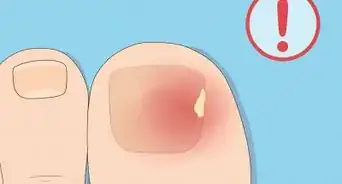
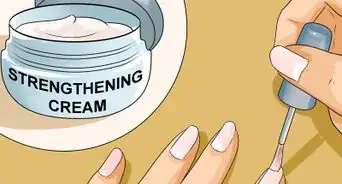












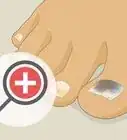
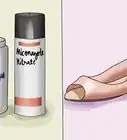





































Medical Disclaimer
The content of this article is not intended to be a substitute for professional medical advice, examination, diagnosis, or treatment. You should always contact your doctor or other qualified healthcare professional before starting, changing, or stopping any kind of health treatment.
Read More...